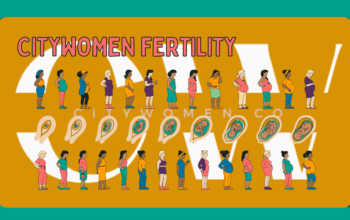
February 06, 2020 at 07:30PM by CWC
Long distances get all the glory. Marathon training, in particular, begs for praise. After all, a cool 20-mile training run over a weekend adds up to two or three weeks worth of cardio for some. But the thing about running marathons is this: After a while, you want a new challenge that doesn’t require you to go to bed at 8:30 p.m. on a Friday night, so that you can train for four hours the next morning. So, when a friend asked if I wanted to run the Brooklyn Mile, I agreed—albeit, hesitantly. Because, running short distances can actually be harder than hitting the pavement for 26.2.
While long runs are about endurance and require you to think about pacing over the course of a few hours, short runs are all about speed and require you to give an all-out effort over the span of mere minutes. Sure, it’s all running, but the challenges presented by the two are worlds apart psychologically and physiologically.
As an endurance athlete, I wondered: Could I do it well enough to be proud of? As I clicked to register for the race, I felt the same twinge of anxiety that I felt when I signed up for my first marathon back in 2012. And I immediately knew two things: I was going to need to set a goal, and I was definitely going to need a coach.
What it’s like to run fast
ADVERTISEMENT
ADVERTISEMENTKate Spade Autumn/Winter Sale |
Fairly quickly, I turned to Steve Finley, Nike+ Running Coach, and head coach of the Brooklyn Track Club, to guide me throughout the race. According to him, I’d only need to run for four days a week to gear up for it, including two recovery run days—between 30 and 50 minutes on my feet—and two days of speed work, which was far faster than my usual marathon pace. “No one goes out and runs a six-minute mile when they’ve been training at a 7:30 pace for months leading up to it,” he tells me.
According to Deborah Roche, PhD, a clinical psychologist in the Women’s Sports Medicine Center at the Hospital for Special Surgery in New York City, I’d have to differentiate between pain and discomfort to be able to push myself in this type of a short race. “When things are hard, naturally our brain is like back off,” she says. “But distinguishing between the bad pain and the good, successful pain, is important. When you’re running for speed, you want to be able to make it to the finish line and know that you left it all out there.”
With my background, I didn’t like this. I kept wanting to save something for later. During a typical workout of 400-meter (quarter-mile) intervals, Finley would tell me I should get progressively faster as the reps continued. That meant that around the sixth or seventh time around the track, I’d really put my foot on the gas—so to speak. “It takes practice to get used to,” says Dr. Roche. “But that’s the point of tempo work, so you can taste what it’s like to be faster than the goal you are shooting for. For instance: You won’t do a mile all out in practice, but you’ll do repeats at a decent distance of what will simulate what you will feel, then draw on that for race day.”
I felt uneasy about that. I wanted to try the mile. I wanted to visualize and experience what that pain she talked about would feel, so I could prep. But the reality is that runners don’t ever run the full distance before race day: Not the marathon. Not the half-marathon. Instead, Finley had me going 1,000 meters (that’s about .66 miles) until I nailed the pace and was ready to go.
It was over quick
Come race day, I felt a little silly, to be so wrapped up in what would be about six minutes of my life. I took the 45-minute commute to Brooklyn from my apartment. After a quick warm-up mile at 7:30 pace, I put my nerves to the side, my AirPods in, and lined up at the start.
Here we go, I thought.
Once we got moving, I was right behind the six-minute mile pacer. As I settled into my stride, I kept telling myself “you can,” over and over again. “You have to visualize what you want in this moment where it feels impossible,” says Dr. Roche. “By talking yourself up and having phrases that make you feel confident, you can push through walls.”
Still, the pacer slowly crept forward as I was slowly falling back. The crowd was roaring. Three minutes in, I saw my best friend cheering on the sidelines. Five minutes in, more familiar faces. As the finish line came into sight, I saw the numbers above and gave it every little last bit of effort I had in the tank. 6:07:00, as I crossed the line—exhausted. I wanted to cry. Scream. Collapse.
I felt like I failed, but I knew that wasn’t the case. That single mile race felt just as difficult—if not more difficult—than training for my first marathon. “It doesn’t matter the distance, every race has its challenges,” says Dr. Roche. “You went into the race thinking ‘I’ve done tons of one miles,’ but those miles were different. You weren’t doing them all out. Just like any challenge, with time and practice, it will feel different, and you’ll get better.”
Better is something I was open to. Better was something I believed would be possible. Just last week, I raced my second mile of the year. This time, when I crossed the finish line in 6:09 the day after a 15-mile long run, I smiled. No time could tell me what I already knew: I like racing the mile. I like feeling fast. And though I’m unquestionably a distance runner, I’m better for it.
If you want to train, here are some interval workouts to get you moving and this is a 5K plan that’ll get you running your first race.
Author Emily Abbate | Well and Good
Selected by CWC
ADVERTISEMENT
ADVERTISEMENTSports Direct Free Delivery on All Orders! |

ADVERTISEMENT
ADVERTISEMENTUp to 30% off Gift Sets |







